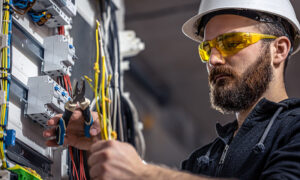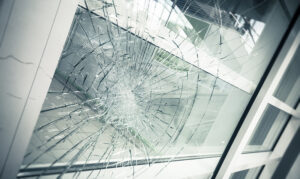Understanding and executing HOA maintenance responsibilities is essential to successful community management. From keeping common areas pristine to ensuring structural integrity, homeowners associations play an integral role in maintaining the shared elements of residential communities. There is more to HOA maintenance, though, than meets the eye.
What Are HOA Maintenance Responsibilities?
Homeowners associations must fulfill several obligations, including the obligation to keep up with maintenance and repairs. This obligation usually stems from the association’s governing documents, to preserve curb appeal and property values. After all, no one wants to live in a poorly maintained community.
While exact maintenance responsibilities can vary from association to association, they usually cover three aspects: common area maintenance, exterior maintenance, and limited common element maintenance.
1. Common Area Maintenance
Common areas generally pertain to the properties and amenities of an HOA that all homeowners can use. These include hallways, elevators, sidewalks, pools, parks, and fitness centers. The HOA is typically responsible for maintaining and repairing these shared areas.
HOA common area maintenance responsibilities include:
- Cleaning. The association is responsible for regularly cleaning all common spaces and elements. Keeping these areas clean is essential to the continued enjoyment of residents.
- Landscaping. The association is in charge of maintaining all landscaping aesthetics and features in common areas. Landscaping not only adds to the beauty of shared spaces but can also support functionality.
 Infrastructure. The association usually maintains sidewalks, parking lots, and shared walkways. This responsibility in gated communities typically extends to private streets or roads.
Infrastructure. The association usually maintains sidewalks, parking lots, and shared walkways. This responsibility in gated communities typically extends to private streets or roads.- Utilities. The association covers the maintenance and repair of utilities, including electric systems, sewage systems, and gas. HOA plumbing responsibilities also fall under this.
While an HOA’s governing documents tend to be more specific, some state laws indicate an association’s default maintenance responsibilities. California is one example, with Civil Code Section 4775 stating that an HOA is responsible for common area repairs, maintenance, and replacements unless otherwise provided in the declaration.
2. Exterior Maintenance
It is part of maintenance and HOA repair responsibilities to maintain the exteriors and structures of all common buildings and components. This includes the community’s exterior walls, roofs, and sidings, except for those that fall under separate interests.
3. Limited Common Element Maintenance
The HOA’s responsibility does not always stop at common areas and elements. HOA repairs and maintenance can also cover limited common elements. Limited common elements refer to components and spaces that one or more but less than all homeowners use. Another term for this is “exclusive use common elements.”
You will typically find limited common elements in condo communities. Examples of limited common elements in condos include balconies, patios, garages, private entryways, and shared walls.
The governing documents of an HOA, specifically the community plat and CC&Rs, outline which elements are for exclusive and general use. These documents should also define who maintains such elements, as some communities may have differing requirements.
 How to Handle HOA Maintenance Issues
How to Handle HOA Maintenance Issues
When faced with a maintenance complaint, an HOA board should know how to address the problem properly. More often than not, an association already has a standard procedure. If your HOA has not established such a procedure, here are the general steps.
1. Confirm Responsibility
First, confirm that the damage or maintenance issue falls under the HOA’s scope of responsibility. You will find this information within state laws and your governing documents.
While the HOA should inspect all spaces regularly, accepting service requests or complaints from members can also be helpful. Homeowners can complete a form and attach photos to submit their maintenance concerns.
2. Check Insurance Coverage
Once your HOA board confirms responsibility, it is time to check your insurance policy. Insurance plays a pivotal role in protecting the association’s assets. If your policy covers the damage, file a claim with your insurance provider.
3. Get in Touch With the Contractor
Finally, contact your contractor for maintenance or repairs. Sometimes, insurance providers have a list of pre-approved contractors that you must work with. Other times, your HOA can choose the contractor on your own. Make sure to oversee the maintenance and repair process to avoid subpar work.
Bonus Option: Hire an HOA Management Company
Not all HOA boards have the time or resources to dedicate to maintenance issues. An HOA management company can be of great assistance in this aspect. The company can field homeowner complaints, liaise with insurance providers and contractors, and ensure the proper and complete delivery of all services.
HOA Maintenance Responsibilities of Homeowners
The HOA is not the only one with maintenance obligations. Homeowners have their maintenance responsibilities to fulfill. In HOA communities, homeowners are usually responsible for maintaining and keeping their separate interests.
You will find “separate interest” defined in your community documents. However, this typically refers to a member’s own property or unit, including the lot, structures, and improvements. Sometimes, the HOA will provide landscaping services to individual lawns or yards, though this is not always the case.
Because homeowners must keep their spaces pristine, purchasing homeowners insurance is essential. Some associations even require their members to maintain this type of insurance coverage. It can come in handy when there is third-party damage or in the event of a covered peril.
Frequently Asked Questions
Who pays for HOA maintenance?
The HOA pays for the maintenance and upkeep of areas and components under its responsibility. That said, the money the HOA uses comes from the homeowners themselves. Homeowners pay regular dues to the association, which it then deposits into the operating fund used for various expenses. Some associations refer to this as HOA maintenance fees.
Is the HOA responsible for water damage?
It depends. If water damage occurs in a common area, the HOA is usually responsible for it. If the water damage occurs in a separate interest, the owner of the separate interest is usually responsible for it. In some cases, the HOA may be responsible for water damage in a separate interest if it resulted from the association’s negligence or if it started from a common area the HOA covers. However, this situation can be tricky, so it is best to tackle such issues on a case-by-case basis.
 Who pays for common area damage caused by a homeowner?
Who pays for common area damage caused by a homeowner?
If a homeowner causes damage to a common area, the HOA’s insurance usually covers the cost of maintenance and repairs. However, if the homeowner caused damage intentionally, they may be liable for it, though this can still vary from one case to another.
What can homeowners do about the lack of HOA maintenance?
If an HOA fails to maintain common areas, homeowners can take the following steps:
- Check the governing documents. This is to confirm that the HOA is responsible for maintenance and repairs. The governing documents should also contain information on reporting maintenance issues to the board.
- Take photos of the maintenance issue. Photos with date and timestamps serve as evidence. They also give the board a visual representation of the complaint.
- Understand the root of the problem. Sometimes, the HOA board is aware of the problem and is working on a solution. The delay could stem from other issues, such as a lack of funds, new contractors, or inexperienced board or committee members who have yet to grasp their responsibilities fully.
- Attend the next board meeting. If there is no complaint system, homeowners can attend the next board meeting to raise their concerns.
- Go for dispute resolution. Homeowners may enter dispute resolution with their HOA, whether internal or alternative, to compel the board to address maintenance issues.
- Remove a board member. After exhausting all options without results, homeowners can band together and petition to remove a board member.
Can homeowners sue the HOA for the lack of maintenance?
Homeowners do have the option to sue the HOA for negligence. Lawsuits take a lot of time to resolve and can cost a lot of money. Plus, there is no guarantee that a court will side with the homeowners. If homeowners still wish to pursue this course of action, building a strong case with solid evidence is imperative.
Your Partner in Maintenance
Juggling HOA maintenance responsibilities can come as a challenge for board members. While state laws and governing documents can help immensely, nothing compares to the ease and efficiency of hiring an HOA management company.
Elite Management Services provides exceptional maintenance services to HOAs and condo communities. Call us today at (855) 238-8488 or contact us online to learn more!
RELATED ARTICLES:
- HOA Maintenance Checklist: Keeping Tabs On Community Maintenance
- HOA Roof Replacement Guidelines To Follow
- What Is Homeowners Insurance? Do Homeowners Really Need It?







